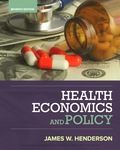7. An incentive A) could be a reward but could not be a penalty.
B) could be a penalty but could not be a reward.
C) could be either a reward or a penalty.
D) is the opposite of a tradeoff.
E) occurs in the macroeconomy but not in the microeconomy.
8. Choose the statement about incentives that is incorrect
.
A) An incentive can be a penalty that discourages an action.
B) Incentives create scarcity.
C) With stiffer penalties for fraud, company directors have an incentive to play by the rules.
D) If the price of a bus ride falls, Jill has less incentive to drive herself to school.
E) An incentive can be a reward that encourages an action.
9. ) The two big economic questions
A) summarize the scope of economics.
B) are "what goods and services are produced?" and "how are goods and services produced?" C) are "why are goods and services produced?" and "when are goods and services produced?" D) deal with macroeconomics but not microeconomics.
E) are "where are goods and services produced?" and "what goods and services are produced?" 10. The two big economic questions include all of the following
except
A) what
to produce.
B) why
to produce.
C) how
to produce.
D) for whom
to produce.
E) a determination of whether the pursuit of self-interest also promotes the social interest.
11. An art museum decides to offer audio tour downloads rather than have tour guides. The museum is answering the ________ question.
A) "what"
B) "who"
C) "how"
D) "where"
E) "when"
12. A choice is in the social interest when it is
A) best for the poorest citizens.
B) influenced by lobbyists.
C) best for society as a whole.
D) made by majority vote.
E) made by well-meaning citizens.
13. The expansion of international trade, borrowing and lending, and investment is
A) the big tradeoff.
B) not in the best interests of most countries.






 Exploring EconomicsEconomicsISBN:9781544336329Author:Robert L. SextonPublisher:SAGE Publications, Inc
Exploring EconomicsEconomicsISBN:9781544336329Author:Robert L. SextonPublisher:SAGE Publications, Inc









